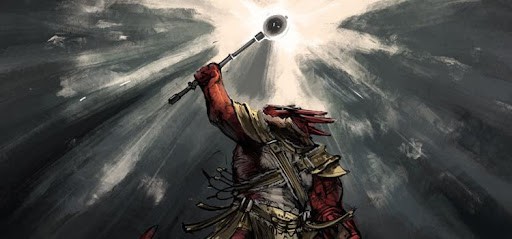The boom-bladed dagger in the class of 5E has some nifty tricks up its sleeve. Many abilities in this build can cause some problems to your enemies if used correctly. Here is a comprehensive guide about booming Blade 5e for you to read and understand:
You can do extra attack damage by combining Booming Blade and Rogue Cut. Make sure to use the Backswing and then use the finishing part of your combo to do additional damage. It can be used independently or with other abilities, such as Spinning Blow and Riposte.
This is specifically useful for Arcane Tricksters who have a chance to cast Booming Blade. Still, it is also helpful for a class willing to risk trying to hit the enemy with a ranged weapon to get the extra attack damage. This additional damage will excite the fight, especially if your enemy has multiple healers. It is also great to finish off a monster that may be taking too much damage to use Booming Blade and kill it before healing yourself.
The first thing to be careful of with Booming Blade 5e is that it only works on one enemy at a time. You cannot use it on your whole group unless your sorcerer spells are long enough to work over the entire fight.
For instance, you cannot use the ability on a target currently suffering from a hex or another status ailment that will last long enough for you to execute the spell. If you cast it when a curse is about to end and the target is still in the middle of a status phase, you will not gain the bonus damage.
Advantage of Booming Blade 5E
The best way to fully take advantage of Booming Blade 5e is to use it right after you have inflicted some damage to your target. If your foe is low on health, he may not be next to a health globe, but he will be next to a group of characters near him.
Cast the ability on one of those groups will inflict massive damage to all of them, including your sorcerer. However, Fubar News can also help you in such conditions.
The best way to play Booming Blade 5e against different opponents is to know when to cast it next. For one thing, you want to ensure that you have some opportunity attacks built up on the same person or characters.
If you have three chance attacks, cast them all on the same group of characters to maximize the damage done. Some players prefer to use up all their chance attacks on the same turn to keep their opponent from attacking them on their turn. Considering your opponent’s defensive ability when using this strategy would be best.
The fifth part of the booming blade 5e strategy is to cast this powerful sorcerer’s cantrip on the same turn you engage in combat with your opponent. You want to do this because of the positioning in which you will find your opponent.
If you position them so they cannot have a clear shot of you, you will significantly reduce their opportunities to hit you with the sorcerer’s cantrip. When they have a chance to use it on you, your booming blade 5e will destroy them before they even have the opportunity to cast it.
Another aspect of the booming blade 5e strategy deals with the characters you can get to take out your opponent. You can use two different casters against each other, known as Whelps and Fiends, respectively.
You will notice that the 5e booming blade you have cast will destroy anything made out of flesh during the casting process. Anything made of metal, such as a plate or iron, will be unable to withstand the attack and will be destroyed immediately.
You should know about the booming blade 5e, which says that the green-flame blade will not work if your target is a lich. The reason for this is because the lich has immunity to fire.
Using the sword as a weapon will only be effective if you also use a good fighter or one who can protect itself from attacks with a shield. You must take out other soldiers rather than just focusing on one target. If you want to learn tips to help you quickly remove your opponent, read this.





